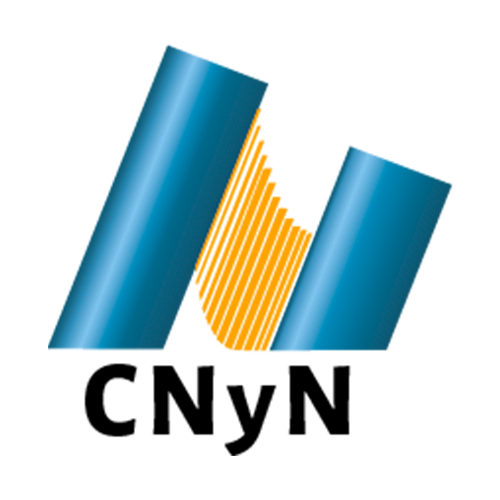Convergence between artificial intelligence and nanotechnology
Main Article Content
Abstract
Nanotechnology and artificial intelligence are two scientific fields that individually have promoted a scientific and technological revolution across the globe. While nanotechnology enables the manipulation of matter at nanometric scales to develop applications and technologies with unique properties, artificial intelligence emerges as a set of effective techniques to potentiate computer systems that perform tasks of classification, optimization, prediction, and pattern recognition, imitating the capabilities of the human being. The intersection between both fields constitutes a multidisciplinary and modern research area that promises to boost a new generation of technologies and address critical challenges that contribute to the advancement of science. This work presents a general review of the efforts reported in the literature where the self-learning attributes of some artificial intelligence algorithms are exploited in the context of nanotechnology. Additionally, future trends and perspectives where these fields converge are discussed.
Downloads
Article Details

Mundo Nano. Revista Interdisciplinaria en Nanociencias y Nanotecnología por Universidad Nacional Autónoma de México se distribuye bajo una Licencia Creative Commons Atribución-NoComercial 4.0 Internacional.
Basada en una obra en http://www.mundonano.unam.mx.
References
Ababneh JI, Qasaimeh O. Simple model for quantum-dot semiconductor optical amplifiers using artificial neural networks. IEEE Transactions on Electron Devices. 2006;53(7):1543-50. DOI: https://doi.org/10.1109/TED.2006.875803
Al-Khedher MA, Pezeshki C, McHale JL, Knorr FJ. Quality classification via Raman identification and SEM analysis of carbon nanotube bundles using artificial neural networks. Nanotechnology. 2007;18(35):355703-. DOI: https://doi.org/10.1088/0957-4484/18/35/355703
Arlat J, Kalbarczyk Z, Nanya T. Nanocomputing: Small devices, large dependability challenges. IEEE Security & Privacy. 2012;10(1):69-72. DOI: https://doi.org/10.1109/MSP.2012.17
Arrieta AB, Díaz-Rodríguez N, Del Ser J, Bennetot A, Tabik S, Barbado A, Herrera F. Explainable artificial intelligence (XAI): Concepts, taxonomies, opportunities and challenges toward responsible AI. Information fusion. 2020;58:82-115. DOI: https://doi.org/10.1016/j.inffus.2019.12.012
Asproulis N, Drikakis D. Nanoscale materials modelling using neural networks. Journal of Computational and Theoretical Nanoscience. 2009;6(3):514-8. DOI: https://doi.org/10.1166/jctn.2009.1062
Bishop CM, Nasrabadi NM. Pattern recognition and machine learning. New York: springer; 2006.
Brunton SL, Kutz JN. Data-driven science and engineering: Machine learning, dynamical systems and control. Cambridge University Press; 2022. DOI: https://doi.org/10.1017/9781009089517
Brunton SL, Proctor JL, Kutz JN. Discovering governing equations from data by sparse identification of nonlinear dynamical systems. Proceedings of the national academy of sciences. 2016;113(15):3932-7. DOI: https://doi.org/10.1073/pnas.1517384113
Chen SH, Jakeman AJ, Norton JP. Artificial intelligence techniques: an introduction to their use for modelling environmental systems. Mathematics and computers in simulation. 2008;78(2-3):379-400. DOI: https://doi.org/10.1016/j.matcom.2008.01.028
Feichtner T, Selig O, Kiunke M, Hecht B. Evolutionary optimization of optical antennas. Physical review letters. 2012;109(12):127701-. DOI: https://doi.org/10.1103/PhysRevLett.109.127701
Forestiere C, Donelli M, Walsh GF, Zeni E, Miano G, Dal Negro L. Particle-swarm optimization of broadband nanoplasmonic arrays. Optics letters. 2010;35(2):133-5. DOI: https://doi.org/10.1364/OL.35.000133
Fourches D, Pu D, Tassa C, Weissleder R, Shaw SY, Mumper RJ, Tropsha A. Quantitative nanostructure− activity relationship modeling. ACS nano. 2010;4(10):5703-12. DOI: https://doi.org/10.1021/nn1013484
Gadzhimagomedova ZM, Pashkov DM, Kirsanova DY, Soldatov SA, Butakova MA, Chernov AV, Soldatov AV. Artificial intelligence for nanostructured materials. Nanobiotechnology Reports. 2022;17(1):1-9. DOI: https://doi.org/10.1134/S2635167622010049
Ginzburg P, Berkovitch N, Nevet A, Shor I, Orenstein M. Resonances ondemand for plasmonic nano-particles. Nano letters. 2011;11(6):2329-33. DOI: https://doi.org/10.1021/nl200612f
Goodfellow I, Bengio Y, Courville A. Deep learning. MIT press; 2016.
Ho D, Wang P, Kee T. Artificial intelligence in nanomedicine. Nanoscale Horizons. 2019;4(2):365-77. DOI: https://doi.org/10.1039/C8NH00233A
Hulla JE, Sahu SC, Hayes AW. Nanotechnology: history and future. Human & experimental toxicology. 2015;34(12):1318-21. DOI: https://doi.org/10.1177/0960327115603588
Jackson PC. Introduction to artificial intelligence. Nueva York: Courier Dover Publications; 2019. DOI: https://doi.org/10.18356/d94175df-en
Kim CE, Shin HS, Moon P, Kim HJ, Yun I. Modeling of In2O3-10 wt% ZnO thin film properties for transparent conductive oxide using neural networks. Current Applied Physics. 2009;9(6):1407-10. DOI: https://doi.org/10.1016/j.cap.2009.03.013
Krogh A. What are artificial neural networks?. Nature biotechnology. 2008;26(2):195-7. DOI: https://doi.org/10.1038/nbt1386
Lalmuanawma S, Hussain J, Chhakchhuak L. Applications of machine learning and artificial intelligence for Covid-19 (SARS-CoV-2) pandemic: a review. Chaos, Solitons & Fractals. 2020;139:110059-. DOI: https://doi.org/10.1016/j.chaos.2020.110059
Liu D, Tan Y, Khoram E, Yu Z. Training deep neural networks for the inverse design of nanophotonic structures. Acs Photonics. 2018;5(4):1365-9. DOI: https://doi.org/10.1021/acsphotonics.7b01377
Liu Z, Zhu D, Rodrigues SP, Lee KT, Cai W. Generative model for the inverse design of metasurfaces. Nano letters. 2018;18(10):6570-6. DOI: https://doi.org/10.1021/acs.nanolett.8b03171
McCulloch WS, Pitts W. A logical calculus of the ideas immanent in nervous activity. The bulletin of mathematical biophysics. 1943;5(4):115-33. DOI: https://doi.org/10.1007/BF02478259
Mitchell T, Buchanan B, DeJong G, Dietterich T, Rosenbloom P, Waibel A. Machine learning. Annual review of computer science. 1990;4(1):417-33. DOI: https://doi.org/10.1146/annurev.cs.04.060190.002221
Muliana A, Haj-Ali RM, Steward R, Saxena A. Artificial neural network and finite element modeling of nanoindentation tests. Metallurgical and Materials Transactions A. 2002;33(7):1939-47. DOI: https://doi.org/10.1007/s11661-002-0027-3
Murdoch TB, Detsky AS. The inevitable application of big data to health care. Jama. 2013;309(13):1351-2. DOI: https://doi.org/10.1001/jama.2013.393
Nazari A, Azimzadegan T. Prediction the effects of ZnO2 nanoparticles on splitting tensile strength and water absorption of high strength concrete. Materials Research. 2012;15(3):440-54. DOI: https://doi.org/10.1590/S1516-14392012005000057
Nazari A, Riahi S. Computer-aided prediction of physical and mechanical properties of high strength cementitious composite containing Cr2O3 nanoparticles. Nano. 2010;5(05):301-18. DOI: https://doi.org/10.1142/S1793292010002219
Nielsen MA. Neural networks and deep learning. San Francisco, CA, USA: Determination press; 2015.
Nikiforov MP, Reukov VV, Thompson GL, Vertegel AA, Guo S, Kalinin SV, Jesse S. Functional recognition imaging using artificial neural networks: applications to rapid cellular identification via broadband electromechanical response. Nanotechnology. 2009;20(40):405708-. DOI: https://doi.org/10.1088/0957-4484/20/40/405708
Peurifoy J, Shen Y, Jing L, Yang Y, Cano-Renteria F, DeLacy BG, Soljačić M. Nanophotonic particle simulation and inverse design using artificial neural networks. Science advances. 2018;4(6). DOI: https://doi.org/10.1126/sciadv.aar4206
Qu Y, Jing L, Shen Y, Qiu M, Soljacic M. Migrating knowledge between physical scenarios based on artificial neural networks. ACS Photonics. 2019;6(5):1168-74. DOI: https://doi.org/10.1021/acsphotonics.8b01526
Quiroz-Juárez MA, Torres-Gómez A, Hoyo-Ulloa I, León-Montiel RDJ, U’Ren AB. Identification of high-risk COVID-19 patients using machine learning. PLoS One. 2021;16(9). DOI: https://doi.org/10.1371/journal.pone.0257234
Rapaport DC, Rapaport DCR. The art of molecular dynamics simulation. Cambridge university press; 2004. DOI: https://doi.org/10.1017/CBO9780511816581
Razzak MI, Naz S, Zaib A. Deep learning for medical image processing: overview, challenges and the future. Classification in BioApps. 2018;:323-50. DOI: https://doi.org/10.1007/978-3-319-65981-7_12
Rosenblatt F. The perceptron: a probabilistic model for information storage and organization in the brain. Psychological review. 1958;65(6):386-. DOI: https://doi.org/10.1037/h0042519
Sacha GM, Rodriguez FB, Varona P. An inverse problem solution for undetermined electrostatic force microscopy setups using neural networks. Nanotechnology. 2009;20(8):085702-. DOI: https://doi.org/10.1088/0957-4484/20/8/085702
Sacha GM, Varona P. Artificial intelligence in nanotechnology. Nanotechnology. 2013;24(45):452002-. DOI: https://doi.org/10.1088/0957-4484/24/45/452002
Shen D, Wu G, Suk HI. Deep learning in medical image analysis. Annual review of biomedical engineering. 2017;19:221-. DOI: https://doi.org/10.1146/annurev-bioeng-071516-044442
Singh AV, Ansari MHD, Rosenkranz D, Maharjan RS, Kriegel FL, Gandhi K, Luch A. Artificial intelligence and machine learning in computational nanotoxicology: unlocking and empowering nanomedicine. Advanced Healthcare Materials. 2020;9(17):1901862-. DOI: https://doi.org/10.1002/adhm.201901862
So S, Badloe T, Noh J, Bravo-Abad J, Rho J. Deep learning enabled inverse design in nanophotonics. Nanophotonics. 2020;9(5):1041-57. DOI: https://doi.org/10.1515/nanoph-2019-0474
Uusitalo MA, Peltonen J, Ryhänen T. Machine learning: how it can help nanocomputing. Journal of Computational and Theoretical Nanoscience. 2011;8(8):1347-63. DOI: https://doi.org/10.1166/jctn.2011.1821
Wetzstein G, Ozcan A, Gigan S, Fan S, Englund D, Soljačić M, Psaltis D. Inference in artificial intelligence with deep optics and photonics. Nature. 2020;588(7836):39-47. DOI: https://doi.org/10.1038/s41586-020-2973-6
Wilson B, Km G. Artificial intelligence and related technologies enabled nanomedicine for advanced cancer treatment. Nanomedicine. 2020;15(05):433-5. DOI: https://doi.org/10.2217/nnm-2019-0366
Woolley RA, Stirling J, Radocea A, Krasnogor N, Moriarty P. Automated probe microscopy via evolutionary optimization at the atomic scale. Applied Physics Letters. 2011;98(25):253104-. DOI: https://doi.org/10.1063/1.3600662
Xu B, Shen Z, Ni X, Wang J, Guan J, Lu J. Determination of elastic properties of a film-substrate system by using the neural networks. Applied physics letters. 2004;85(25):6161-3. DOI: https://doi.org/10.1063/1.1841472
Yan X, Sedykh A, Wang W, Yan B, Zhu H. Construction of a web-based nanomaterial database by big data curation and modeling friendly nanostructure annotations. Nature communications. 2020;11(1):1-10. DOI: https://doi.org/10.1038/s41467-020-16413-3
Yang W, Zhang X, Tian Y, Wang W, Xue JH, Liao Q. Deep learning for single image super-resolution: a brief review. IEEE Transactions on Multimedia. 2019;21(12):3106-21. DOI: https://doi.org/10.1109/TMM.2019.2919431





